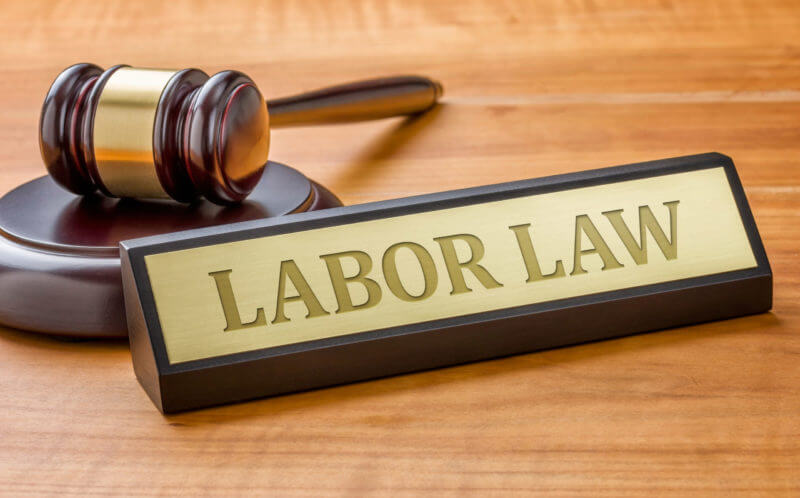Labour Laws Have A Long History Of Reforms In India But The Biggest Of Those Reforms Was Introduced In The Year 2019 Which Proposed To Consolidate The Laws And Make Them Uniform, Before Diving Further Into The Reforms And The Previous Laws Let Us Understand What Labour Laws And Their Purpose Are. Labour Laws Are In Simple Terms The Laws Governing The Employees And Are Related To The Various Rights Of The Employees, And Daily Wage Labourers Including Ease Of Doing Business, On-Time Wages Payment, Fair Wages Etc.
Labour Laws: Before 2019 – 20 reforms
There Were Over 100 State And 40 Centre-Made Laws Regulating Various Aspects Such As The Resolution Of Disputes, Employment Conditions, Social Security, Wages Etc. Before The 29 Laws Were Consolidated Into Four Codes. There Were Various Laws Regarding Every Different Aspect Related To Safeguarding The Rights Of The Employees, Regarding The Payment Of Wages, Bonuses, And Compensations Laws Relating To Maternity Benefits Etc. There Were Different Acts For Different Workers For Instance The Dock Workers (Safety, Health, And Welfare) Act,1986 Or The Cine Workers And Cinema Theatre Workers Act,1981, The Beedi And Cigar Workers (Conditions Of Employment) Act,1976 Etc. Was Solely For The Purpose Of Regulating The Dock Workers.
The Earlier Laws Were Very Scattered, And The Employees Could Not Avail All The Benefits Provided Under Those As The Level Of Awareness Among The Concerned People Was Poor And Improper Implementation, Around 90% Of The Workers From The Unorganized Sector Till Now Do Not Have Any Social Security And On The Other Hand There Were Limitless Compliances For The Firms Which Were Very Hectic, Which Eventually Led The Government To The Conclusion That The Labour Laws Need Some Effective And Functional Reforms.
Labour Laws: After 2019 – 20 reforms
The New Labour Codes Were Passed By The Parliament Of India In The Year 2019 And Released The Working Class From The Entanglement Of The Multiple Labour Legislations And Made Four Labour Codes On The Recommendations Of The Second National Commission On Labour (The NCL), 2022. The NCL Had Found The Earlier Legislations Knotty With Obsolete Provisions And Erratic Definitions And To Improve The Ease Of Workers Had Recommended Consolidating The Laws Into Major Categories; Industrial Relations, Wages, Social Security, Safety, Welfare And Working Conditions The Four Codes Are Largely Based On These Recommendations These Are:
- The Code On Wages, 2019
- The Occupational Safety, Health, And Working Conditions Code, 2020
- The Code On Social Security, 2020
- The Industrial Relations Code, 2020

The Code on Wages, 2019
The Four Acts Which Were In Force Earlier: The Payment Of Wages Act (1936), The Minimum Wages Act (1948), The Payment Of Bonus Act (1965) And The Equal Remuneration Act (1976) Were Consolidated And Transformed Into The Code On Wages, 2019. This Code Will Be Applicable To All The Working Class Whether Organized Or Unorganized Whether From Various Different Sectors. As Per The Present Code, The Central Government Will Possess The Power Of Deciding Wages Or Employment For Railways, Mines And Oil Fields And All Other Sectors Will Be Taken Care Of By The State Governments As The Labour Laws Are A Subject Under The Concurrent List.
The Primary Features Of The Code Include The Right Of Minimum Wages For Every Worker And The Governments Will Have To Review Wages Every 5 Years Based On Criteria Such As The Level Of Skill And The Geographical Area To Ensure That The Workers Are Not Being Exploited. The Code Also Guarantees On-Time Payments Of Wages To The Workers And That The Male And Female Workers Will Not Be Discriminated Against And That Equal Remuneration Will Be Paid To Both Genders.
A Fresh Concept Of Floor Wage Has Been Introduced In The Code To Ensure That There Are No Regional Disparities In The Minimum Wages Being Given To The Workers Along With This The Ceiling Of Wages Has Been Increased To Rs.24000 From Rs.18000.
The Occupational Safety, Health, and Working Conditions Code, 2020
This Code Has Incorporated The Three Major Categories As Recommended By The NCL: Safety, Welfare, And Working Conditions. This Code Will Ease The Conditions For The Inter-State Migrant Workers And These Workers Can Be Aatmanirbhar Through Registering On The National Portal Formulated For The Inter-State Migrant Workers And Will Then Get The Benefits Of All Social Security Schemes.
Providing Appointment Letters To The Workers Has Been Made Mandatory Under This Code Along With The Mandatory, Free, And Annual Health Check-Ups Of The Workers. A Helpline Facility In Every State Will Also Be Started For The Resolution Of Grievances.
The Women Workers Will Be Entitled To Work In All Types Of Establishments And Will Be Given The Right To Work At Night With Their Consent And The Employer Is Obligated To Make Adequate Arrangements To Ensure The Safety Of The Women Workers.
The Code on Social Security, 2020
This Code Has Been Formulated After Incorporating 9 Labour Laws Which Were In Force Earlier In Order To Ensure That Every Worker From Either Of The Sectors Receives Social Security In The Form Of Rights Of The Workers For Insurance, Pension, Gratuity, Maternity Leaves, Benefits And So On. The Code Provides For Free Medical Treatment In Hospitals And The Dispensaries Of ESIC And After The Implementation Of This Code, The Benefits Of ESIC Will Be Available To The Workers From The Unorganized Sector As Well.
The ESIC Has Been Expanded And Has Reached The District Level And Will Reach All 740 Districts Moreover Now Even A Single Person If Engaged In Hazardous Activities Will Be Entitled To Get The Benefits. The Plantation Workers Will Also Be Included In Other Eligible Workers To Avail Facilities At ESIC And The Institutions Which Are Primarily Engaged In The Hazardous Areas Will Be Obligated To Register With ESIC.
The EPFO Scheme Relating To The Pension Will Reach All The Workers Of Organized, Unorganized, And Even Self-Employed Sectors. A Social Security Fund Will Be Created To Provide Pensions To The Workers From The Unorganized Sector And A Database Of All The Workers From The Unorganized Sector Will Be Prepared. The Fixed-Term Workers Will Get Gratuity Benefits Without An Obligatory Requirement Of Minimum Service.
The Industrial Relations Code, 2020
The Code On Industrial Relations Simplifies The Compliance Process. It Has Incorporated Three Legislations Including The Industrial Disputes Act (1947), The Industrial Employment (Standing Orders) Act, 1946 And The Trade Unions Act, 1926. This Code Introduces The Definition Of The Terms ‘Employee’ And ‘Fixed–Term Employment And The Term ‘Workmen’ Has Been Replaced With ‘Worker’ In The Present Code. The Definition Of The Term ‘Strike’ Has Been Changed To Make It ‘Mass Casual Leave By More Than 50% Of Workers On A Given Day.
Approaching The Grievance Redressal Committee In Case Of Any Grievance And The Enquiry With The Investigation Shall Be Concluded In 90 Days Which Is Started With The Worker’s Suspension. A Sole Negotiation Unit Is Also Included In The Code In The Establishments Which Contains More Than One Trade Union, And The Code Also Provides For The Workers To Secure Employment After Being Laid Off. The Industrial Disputes Shall Be Resolved By Constituting A National Industrial Tribunal And One Or More Industrial Tribunals.
The Implementation of Labour Codes

- The Code On Wages, 2019 As Of Now Has Been Implemented In 25 States And 6 Union Territories.
- The Occupational Safety Health And Working Conditions Code, 2020 Is Implemented In 21 States And 3 Union Territories.
- The Code On Social Security, 2020 Is Currently Implemented In 20 States And 5 Union Territories.
- The Industrial Relations Code, Of 2020 Is Implemented In 22 States And 4 Union Territories.
Labour Law Is A Subject That Falls Under The Third List Of The Constitution Of India; The Concurrent List And As A Result, The Central Government And The State Governments Will Have To Notify The Labour Code Rules In The Official Gazette In Order To Enforce The Rules In The Respective Jurisdictions.
At Present, The Centre Has Finalized The Rules And Once All The States Finalize The Rules, The Codes Will Be Implemented Uniformly All Over The Country. Several UTs And States Have Pre-Published The Draft Rules Regarding The Four Labour Codes, But The Codes Will Be Implemented After The Notification Is Released By The Union And The States.
Resolving Labour Disputes through Alternative Dispute Resolution and How can WeVaad help?
Labour Disputes Can Be Easily Resolved Through The Various Mechanisms Of Alternative Dispute Resolutions (ADR) Namely Arbitration, Mediation And Conciliation Which Will Significantly Reduce The Time And Cost Of Dispute Resolution. This Will Benefit The Employee And The Employer Both.
WeVaad Is An Online Dispute Resolution Platform, Providing Services Of Alternative Dispute Resolution Through Online Means Which Further Reduces The Cost And The Time Of Dispute Resolution And Makes It Even More Efficient. We Have Services Like Online Arbitration, Mediation And Conciliation And The Whole Process Is Tracked In Order To Ensure Effective Resolution. We Have A Panel Of Experts Who Act As Arbitrators/ Mediators/ Conciliators And Have Expertise In Resolving All Kinds Of Disputes.

